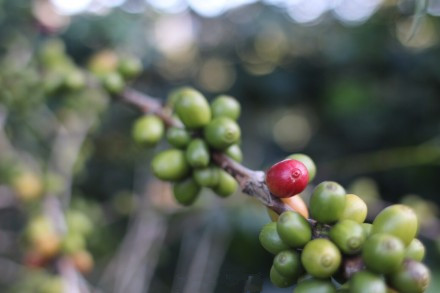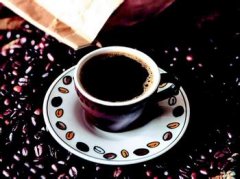Basic knowledge of Coffee what is individual coffee?
The so-called single-product coffee is made from a single coffee bean produced in the country of origin and is generally pure coffee without milk or sugar when drinking. Have strong characteristics, special taste: or fresh and soft, or mellow smooth; the cost is higher, so the price is more expensive.

Such as the famous Blue Mountain Coffee, Brazilian Coffee, Italian Coffee, Colombian Coffee. They are all individual products named after the origin of coffee beans. Mocha coffee and charcoal coffee are also individual products, but their names are quite special. Mocha is a port in Yemen. the coffee produced in this port is called mocha, but the coffee may come from different places, so each batch of mocha beans tastes different.
1. Types of individual coffee
(1) Blue Mountain Coffee: from Jamaica. Pure Jamaican Blue Mountain Coffee perfectly combines the unique sour, bitter, sweet and mellow flavors of coffee. The aroma is very rich, mellow and smooth, with long-lasting fruit flavor, forming a strong and attractive elegance, which is unmatched by other coffee. It can be said to be the best coffee.
(2) Colombian coffee: produced in Colombia, roasted coffee beans release a sweet fragrance, with sweet in acid and medium in bitterness, moderate concentration and long-lasting fruit aroma. It is very nutritious, highly balanced and sometimes nutty. Because of the appropriate concentration, it is also used in high-grade mixed coffee.
(3) Brazilian coffee: there are many kinds of coffee, most of which are moderately acidic, its sweet, bitter and mellow tastes are neutral, moderate concentration, smooth and special taste, known as the backbone of coffee, but also a very good blending bean.
(4) Italian coffee: it has a strong aroma and strong bitter taste, and a thin layer of coffee oil appears on the surface of the coffee, which is the source of the attractive aroma of Italian coffee. Suitable for those who pursue a strong sense of taste.
(5) Manning Coffee: produced in Indonesia's Sumatra Islands, full of grains, with a very strong flavor, spicy bitterness, people who especially like it will indulge in its bitterness. At the same time, it also has the taste of syrup and chocolate, while the sour taste is not prominent, but it has a strong mellowness, which is a favorite variety in Germany, and coffee lovers mostly drink it on their own. It is also an indispensable breed of mixed coffee.
(6) Java coffee: produced in Java, Indonesia, full-grained, spicy, relatively low acidity, delicate taste, good balance, is a delicate aromatic coffee.
(7) Costa Rican coffee: excellent flavor, smooth, strong acidity, high grade, with attractive flavor.
Kenyan coffee: aromatic, full-bodied, well-balanced and delicious acidity, with excellent fruit flavor, rich and perfect taste. It is one of the most popular varieties in the industry.
(8) mocha coffee: produced in Ethiopia, the beans are small and fragrant, its sour and mellow taste is strong, slightly alcoholic, spicy, moderate sweet taste, special flavor. It is a well-known high-quality coffee, usually drunk individually.
(9) Guatemalan coffee: produced in Antigua, which has fertile volcanic soil, is one of the most famous coffee varieties in the coffee industry. The fertile volcanic soil creates a world-famous soft, mellow taste with a hint of tropical fruit. Rich taste, perfect coordination, plus a trace of smoke, more emphasis on its antiquity and mystery. Many coffee experts have commented that Guatemalan coffee is the best kind of coffee in Central and South America.
(10) Kilimanjaro Coffee: Kilimanjaro from Tanzania. A variety of coffee without acid, with a strong taste and is famous for its duet taste. Exquisite coffee elegant guest, want to feel exotic flavor, boil your taste. Tasting Kilimanjaro coffee is the best choice, the aroma and taste are enough to make the first-time coffee drinkers feel the endless taste of duet.
(11) Kona Coffee: from the Kona region of Hawaii, it is a rare species that can only be grown on volcanic slopes. Taste strong, mellow, and slightly with a kind of wine aroma, the flavor is very special. The selected Kona coffee has a moderate sour taste and a gentle and full-bodied taste, as well as a unique mellow flavor. As the output is decreasing, the price is catching up with Blue Mountain Coffee.
(12) charcoal roasted coffee: it is named after the Japanese who first roasted coffee beans with charcoal. This kind of coffee does have a charcoal-burning taste, but it will not be very strong. It retains the original taste of the coffee and has a pure taste, which may be related to the light eating habits of the Japanese.
2. Representative proportion of individual coffee beans
(1) Acid: 30% in Colombia, 30% in Brazil, 20% in Guatemala, 20% in Mocha
(2) bitter: 30% in Colombia, 30% in Brazil, 20% in Kilimanjaro, 20% in Robusta.
(3) thick: Colombia 40%, Guatemala 20%, Mantenin 20%, Brazil 20%
(4) soft: 40% in Colombia, 30% in Brazil, 20% in Mocha, 10% in Robsta
Important Notice :
前街咖啡 FrontStreet Coffee has moved to new addredd:
FrontStreet Coffee Address: 315,Donghua East Road,GuangZhou
Tel:020 38364473
- Prev

The method of making special fancy coffee introduces the general knowledge of coffee.
1. The sweet and sour taste of pineapple coffee can be integrated with the aroma of coffee, which can not only add to the charming demeanor of this coffee, but also neutralize the strength of coffee, which is worth a try! Features: pineapple and coffee are similar in taste, which can be used together to highlight the delicacy. Tip: choose fresh pineapple slices or a tablespoon of pineapple powder instead. Taste: sour, sweet ingredients: pineapple juice 1OZ (or
- Next

Types and usage of classic chaperone sugars in coffee
The purpose of adding sugar to coffee is to ease the bitterness, and depending on the amount of sugar, it will create a completely different flavor. Powdered sugar: an is a kind of refined sugar, which has no special taste and is easy to dissolve. It is usually easy to use in a small package of 5-8 grams. The price is a little higher than ordinary sugar. Sugar cube: add water to the refined sugar and then solidify it into a lump. The preservation of cube sugar is convenient and easy.
Related
- Beginners will see the "Coffee pull flower" guide!
- What is the difference between ice blog purified milk and ordinary milk coffee?
- Why is the Philippines the largest producer of crops in Liberia?
- For coffee extraction, should the fine powder be retained?
- How does extracted espresso fill pressed powder? How much strength does it take to press the powder?
- How to make jasmine cold extract coffee? Is the jasmine + latte good?
- Will this little toy really make the coffee taste better? How does Lily Drip affect coffee extraction?
- Will the action of slapping the filter cup also affect coffee extraction?
- What's the difference between powder-to-water ratio and powder-to-liquid ratio?
- What is the Ethiopian local species? What does it have to do with Heirloom native species?

